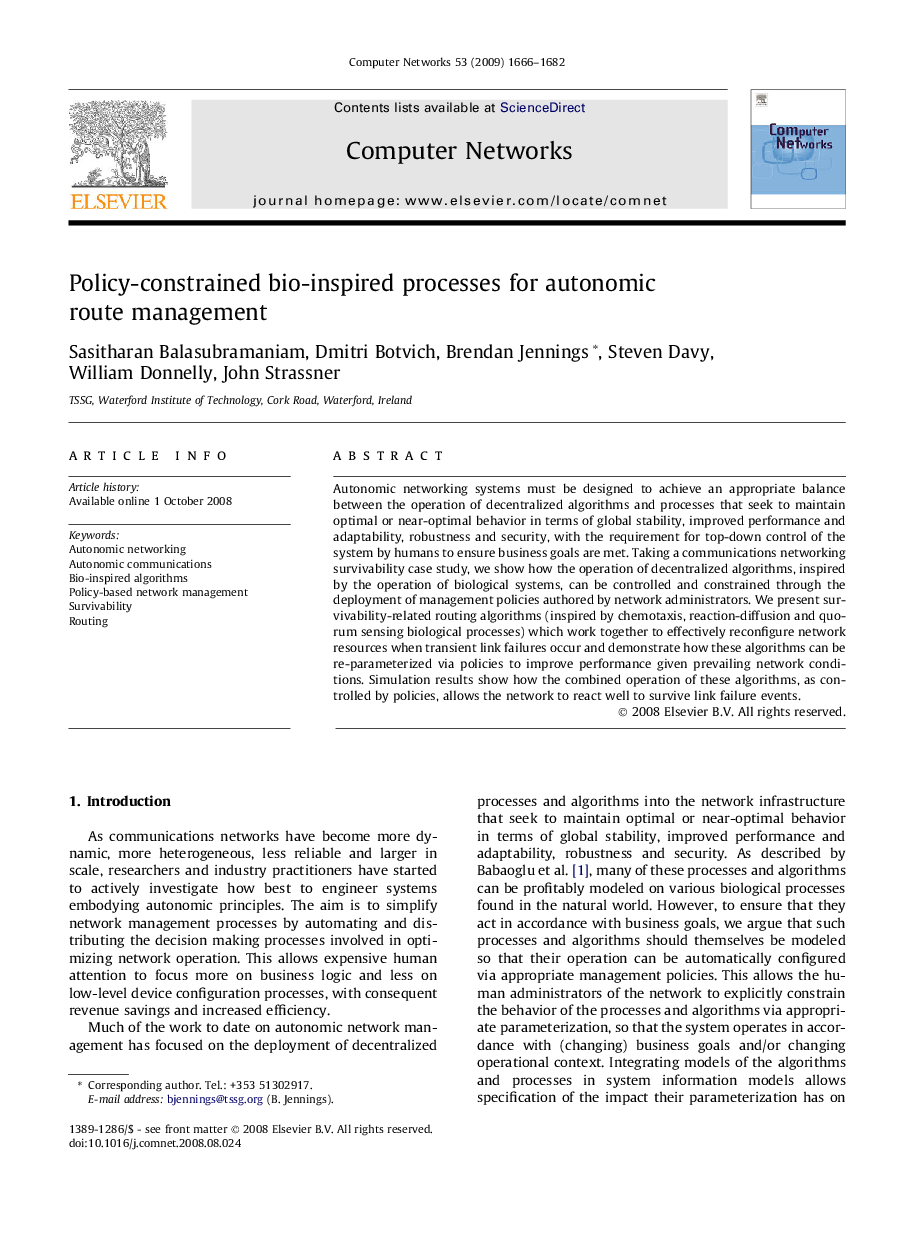| Article ID | Journal | Published Year | Pages | File Type |
|---|---|---|---|---|
| 452310 | Computer Networks | 2009 | 17 Pages |
Autonomic networking systems must be designed to achieve an appropriate balance between the operation of decentralized algorithms and processes that seek to maintain optimal or near-optimal behavior in terms of global stability, improved performance and adaptability, robustness and security, with the requirement for top-down control of the system by humans to ensure business goals are met. Taking a communications networking survivability case study, we show how the operation of decentralized algorithms, inspired by the operation of biological systems, can be controlled and constrained through the deployment of management policies authored by network administrators. We present survivability-related routing algorithms (inspired by chemotaxis, reaction-diffusion and quorum sensing biological processes) which work together to effectively reconfigure network resources when transient link failures occur and demonstrate how these algorithms can be re-parameterized via policies to improve performance given prevailing network conditions. Simulation results show how the combined operation of these algorithms, as controlled by policies, allows the network to react well to survive link failure events.
